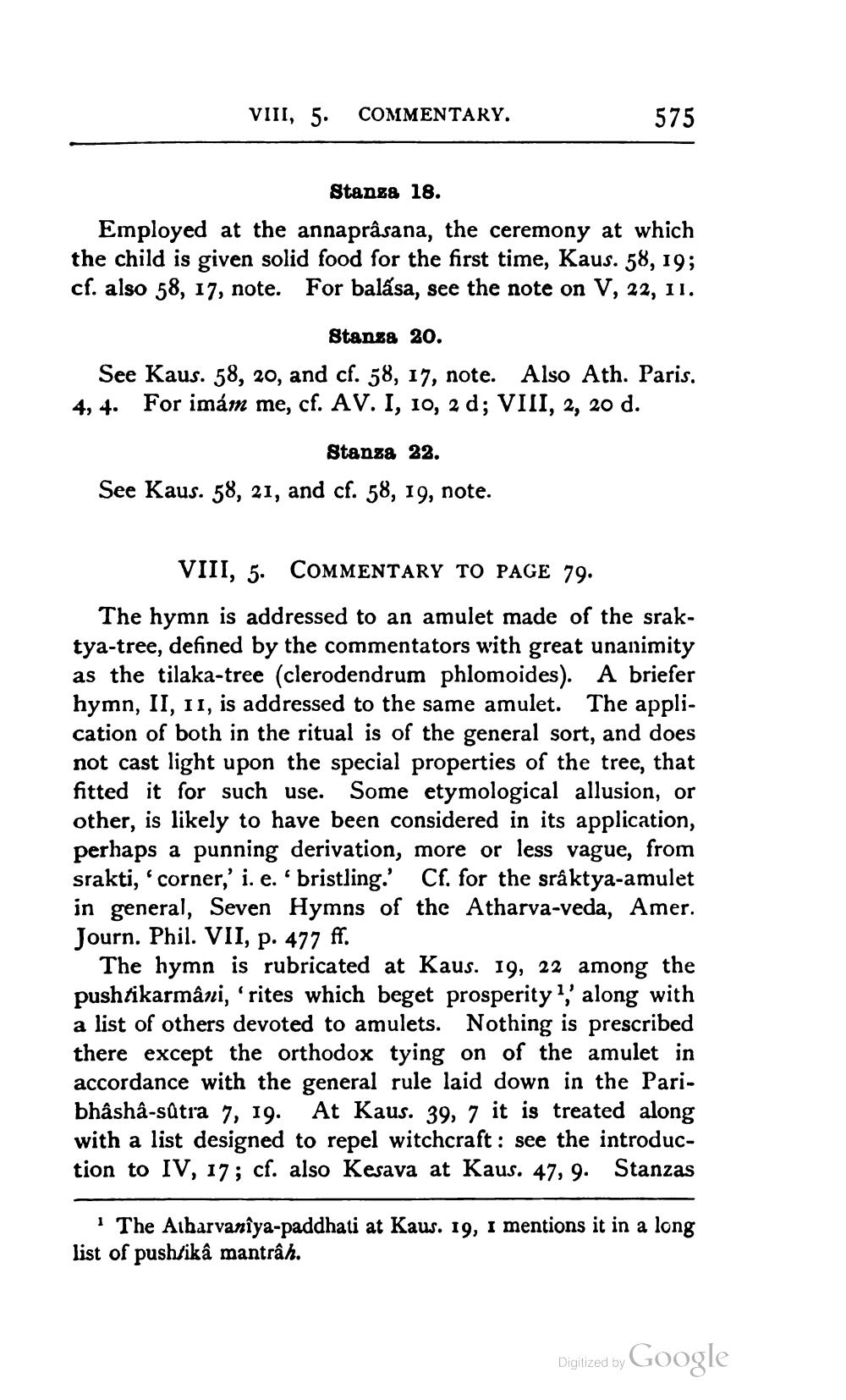________________
VIII, 5. COMMENTARY.
575
Stanza 18. Employed at the annaprâsana, the ceremony at which the child is given solid food for the first time, Kaus. 58, 19; cf. also 58, 17, note. For balása, see the note on V, 22, 11.
Stanza 20. See Kaus. 58, 20, and cf. 58, 17, note. Also Ath. Paris. 4, 4. For imám me, cf. AV. I, 10, 2 d; VIII, 2, 20 d.
Stanza 22. See Kaus. 58, 21, and cf. 58, 19, note.
VIII, 5. COMMENTARY TO PAGE 79. The hymn is addressed to an amulet made of the sraktya-tree, defined by the commentators with great unanimity as the tilaka-tree (clerodendrum phlomoides). A briefer hymn, II, 11, is addressed to the same amulet. The application of both in the ritual is of the general sort, and does not cast light upon the special properties of the tree, that fitted it for such use. Some etymological allusion, or other, is likely to have been considered in its application, perhaps a punning derivation, more or less vague, from srakti,'corner,' i. e. ' bristling. Cf. for the srâktya-amulet in general, Seven Hymns of the Atharva-veda, Amer. Journ. Phil. VII, p. 477 ff.
The hymn is rubricated at Kaus. 19, 22 among the pushtikarmâni, ‘rites which beget prosperity l' along with a list of others devoted to amulets. Nothing is prescribed there except the orthodox tying on of the amulet in accordance with the general rule laid down in the Paribhâshâ-sätra 7, 19. At Kaus. 39, 7 it is treated along with a list designed to repel witchcraft : see the introduction to IV, 17; cf. also Kesava at Kaus. 47, 9. Stanzas
1 The Atharvanîya-paddhati at Kaus. 19, I mentions it in a long list of push/ikâ mantrâh.
Digized by Google




